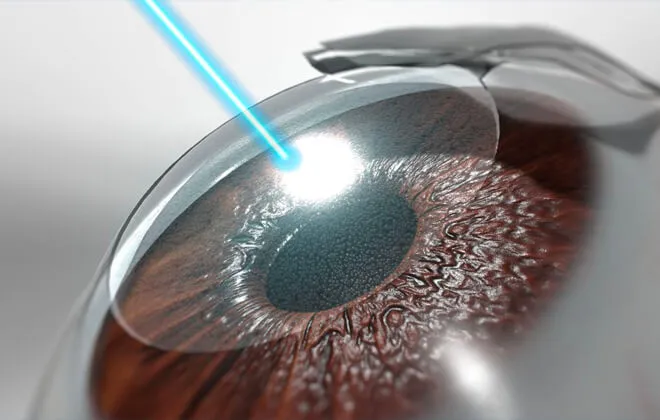
Create an Online Appointment
ou can easily create an appointment by filling out the appointment form below or by clicking here to contact us via Whatsapp.
LASIK Treatment

Lasik is one of the most commonly used methods for the treatment of refractive errors today. This method is suitable for patients who are 18 years and older and have had no changes in their eyeglass prescription in the past year. In order for Lasik treatment to be applied, it is essential that the refractive errors in the eye and the eye structure are suitable for this method. Therefore, before Lasik treatment, a detailed eye examination is performed for all patients, and the corneal layer is thoroughly examined. With today’s technology, Lasik can treat myopia up to 12 degrees, hyperopia up to 6 degrees, and astigmatism.
Lasik is the most commonly used laser treatment method for correcting refractive errors in the eyes. This method is commonly referred to by the abbreviation “Lasik.” Lasik is widely used not only in our country but also around the world. This procedure has been in serious use for over a decade, providing significant improvement for patients. In the United States alone, approximately 600,000 people undergo Lasik treatment each year. In Turkey, although the official number is not known, it is around 30,000.
Who is not suitable for Lasik?
Lasik treatment cannot be applied to individuals with certain conditions. These are listed as follows:
- Those under 18 years old.
- Individuals with keratoconus.
- Those with structural abnormalities in the cornea.
- Individuals with corneal thickness below a certain limit.
- Those experiencing severe dry eyes.
- Diabetic patients.
- Individuals with rheumatic diseases.
- Pregnant women.
- Breastfeeding women.
- Those with conditions such as cataracts, infections, glaucoma in the eyes.
- Individuals with eye hypertension.
How is Lasik treatment performed?
Prior to Lasik treatment, expert doctors conduct an examination to determine if the patient is suitable for this treatment. After this eye examination, tests are conducted, and the condition is assessed. If the patient is suitable, they are informed about the surgery and given an appointment. On the appointment day, the patient is rechecked and taken to the laser room. First, the transparent layer on the eye is numbed with drops, and a thin layer is removed using a laser called “Intralase.” Although the patient may feel pressure during this process, there is no pain. Subsequently, the patient is instructed to look at the red light, and the Lasik treatment begins in this way. The device’s eye-tracking system ensures that the treatment proceeds smoothly even if the patient moves their eye. After these procedures are completed, the patient is given protective glasses for one night. The patient can comfortably return to their daily life the next day.
What happens after the surgery?
The Lasik surgery procedure is painless. However, a slight pain may be felt after the surgery. To reduce the pain, the doctor may prescribe pain relievers. Additionally, for the first 2 hours after the laser, the patient may experience burning, stinging, and watering in the eyes. There may be redness in the whites of the eyes after Lasik. This redness varies in intensity for each person and usually disappears completely after about 15 days. Generally, normal activities can be easily performed within a few days after the surgery. However, the complete clarity of vision may take up to 6 weeks. In some cases, this period may be longer. After Lasik treatment, patients should use the cortisone and antibiotic eye drops prescribed by the doctor. In addition, artificial tears can be used for a short period.
One of the most common concerns for patients is how soon they can return to work after treatment. Experts generally recommend taking 1 week off for the healing process. Especially if the working environment is dusty and not hygienic, this time should be taken. However, if the office environment is hygienic, it is possible to return to work immediately after the surgery.